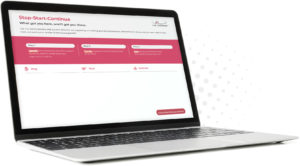At some point in your career, everyone uses – or sees – the Stop-Start-Continue framework. Why? Because it’s a simple way to force (or strongly encourage) prioritization. It gives organizations an opportunity to thoughtfully look at the current landscape and discuss which behaviors are supporting the work of the organization and which behaviors are hindering it.
A Fluid Exercise
The Stop-Start-Continue exercise isn’t “set-it-and-forget-it.” And just because something falls into the Stop bucket today doesn’t mean it was the wrong thing to do at the time. You may have needed a certain behavior before to get you to where you are today. However, it’s no longer serving you and now it’s time to let it go in service of moving forward.
For example, imagine working on a process in its infancy. It was created just to get the ball rolling on some new work, but now you have gotten to a point where different parts of that process have been firmed up. That means there are parts you no longer need, so in order to move forward efficiently, you stop doing them. They were helpful to get you to this point, but you can move forward faster by taking them out of the process.
Finally, it’s not a one-in, one-out exercise either. Just because you stop doing one thing doesn’t mean you must start doing another. Let your organization’s circumstances dictate what goes in and out, not hard and fast rules.

How We Use It
The Clearing approaches Stop-Start-Continue with the recognition that failures or errors that may have been made in a process have value. Before moving forward, we look back and ask, “Why did we do that and what can we apply from it in our next phase?”
We take those learnings and apply a forward-looking lens, assigning actions to each one. By providing examples of what those behaviors look like in action, it allows teams to better understand what it will take to sustain them. The final and most important step, especially when using this framework as part of a team, is determining who is responsible for each action and how you hold each other accountable.
That last part may seem odd given most organizations use the Stop-Start-Continue framework as a planning exercise. However, by adding responsibilities into the mix, teams can use it as a way to check each other as each party moves through the year together.
To simplify things, you can use The Clearing template found here, which is part of our larger culture toolkit (see Phase 1) used to define organizational vision, mission, and values. In this example, you would put the two templates together (S-S-C & Mission, Vision, and Values) for your team to look at. This helps employees think about what they are trying to achieve in a given timeframe, the overarching purpose, and the mission of the team.
Who Should Use It?
The audience is limitless; it can be any person, any team, any industry. In addition, managers can use it as a feedback tool. Similar to organizations, individual behaviors must be adjusted over time to drive personal growth. Using Stop-Start-Continue as part of regular performance check-ins provides a clear tool to review the things you both agreed to do and see if they are actually being done. Just like with a team, it provides managers and employees a way to hold each other accountable.
We Want Your Feedback
We are sharing this framework out with the world in a way that is meant to be iterative. Our team at The Clearing wants to hear back from people on how they’ve used it and its effectiveness so WE can continue to iterate. I invite folks to share their stories with us – and how we can improve it. I am always ready to chat – simply reach out at liz.glodek@theclearing.com.






 The Clearing’s Employee Experience
Improvement model, adapted from Itam
& Ghosh, 2020, focuses on three objectives:
The Clearing’s Employee Experience
Improvement model, adapted from Itam
& Ghosh, 2020, focuses on three objectives: 














